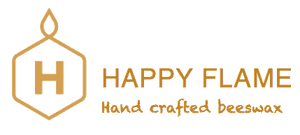At Happy Flame, we have seen a big jump in people reading our blogs about the use of chemicals in soy and paraffin candles. Fragrances and other chemical based waxes added to these candles are now being questioned as people realise the effects these chemicals have on our health.
Dr Sarah Lantz has shared her experiences and knowledge in our last two blogs about rituals and passages to Motherhood. This month we share some of her research into chemical exposure in our day to day lives. Sarah has written extensively about protecting Children from toxic chemicals and how our food is so heavily influenced by companies that not always uses organic solutions.
Hope the following words from Sarah will help understand where chemicals maybe affecting your world:
Body Trespass: Chemical Exposure and the Body Burden
What we know is that we are living in a time of large scale and high-volume industrial chemicals. Global chemical production has risen 400-fold since 1930, escalating from around one million tonnes a year in 1930 to some 400 million tonnes being produced annually today. This is not to deny the many benefits and conveniences that the global chemical industry has made to our fast-paced, consumer driven lives, but to also recognise that the production of chemicals is moving faster than the science community’s ability to thoroughly assess the risks of these chemicals. Over 80,000 chemicals are now registered for use in Australia (38,000 industrial chemicals) and 75% of these have never been tested for their toxicity on the human body or the environment. The recognition of the immense backlog of internationally untested chemicals is both an Australian specific and a global issue. As author and British academic James Martin states, ‘We need the wisdom to recognise that some new technologies are godsends, and others could wreck civilization.’
And one thing is certain – many chemicals are found guilty of body trespass. Environmental toxicants such as methyl mercury, dioxin, phthalates, pesticides, perfumes, bisphenol A, parabens, brominated flame-retardants, perfluorochemicals and other pollutants are regularly detected in the blood and tissue of newborn babies and children and the breast milk of women of reproductive age. These chemicals come from our everyday personal care products, cosmetics, food and food packaging, on surfaces and in the soil, water and air, building materials, and cleaning products. We inhale them, we ingest them, we absorb them into our bodies. While the long-term health effects of these toxicants are yet to be fully realized, what we do know is that exposures have been linked with a range of morbidities including congenital malformations, diabetes, allergenicity, chronic inflammation, generalised immune disorders, digestive dysfunction, endocrine disruption, obesity, intellectual impairments, autism, asthma, cancer, neurological and behavioural conditions, and preterm birth.
So how can we moderate our resilience against toxic chemical exposure and build a strong, robust body? Such a critical question, I’m glad you asked. There are four main pillars: i) reduce toxic exposure; ii) build body resiliency; iii) support the body’s ability to detoxify toxic exposures and; iv) build protective and precautionary policy.
As consumers and producers make choices everyday about the products we purchase and use.
Avoid products that contain harmful ingredients. It’s that simple. In doing this, read the label – marketing claims are limited by the law, and can mean anything or nothing at all, including claims like natural, hypoallergenic, fragrance free, natural and organic.
Familiarise yourself with a good chemical data base such as:
Environmental Working Group’s Skin Deep Database: www.cosmeticsdatabase.com
The Chemical Maze: www.chemicalmaze.com
Building body resiliency takes a little more than reclaiming real food, preferably local and certified organic food, as a means of reclaiming our bodies, our health, and even our planet. Conscious food choices can have a significant impact on one’s toxic exposure. Research reveals that toddlers eating mostly organic food were found to have less than one sixth the pesticide residues in their urine compared to children consuming conventional eating patterns.
We also all have a right to know what is in the products we use and how they are produced. At the heart of this struggle, between the chemical industry and public health and safety is the question of who, and how, we decide what is safe. Historically, industry has always taken the position that there is no reason to hold up production of useful products if no danger has been proven. The law allows for certain amount of ‘acceptable risk’.
One only has to look the range of chemical disasters as a result of releasing products whose danger only becomes apparent over time. Notably, lead, asbestos, tobacco, radioactive materials and many pharmaceutical drugs are examples of substances which were widely used by the public because scientific studies could not initially prove with certainty that they caused harm – until they did.
Given this historical context, it is clear that establishing a different method for deciding how and when industry should proceed with the introduction of new substances or products is critical. Many advocates argue for the precautionary principle which calls for taking action against threatened harm to people and ecosystems, even in the absence of full scientific certainty. The rationale is that modern technologies and human activities can inflict long-term, global-scale environmental and human damage, and that conclusive scientific evidence of such damage may be available too late to avert it.
The precautionary principle asks whether harm can be prevented instead of assessing degrees of ‘acceptable’ risk.
Sarah's next blog on children health is here: "How to reduce the chemical load on families."
More information see these books:
References
Lantz, S. & McIntosh, One Bite at a Time, Ink Asia, Sydney, 2017.
Lantz, S. Protecting children from toxic chemicals: Putting it on Australia’s public health agenda, Journal of Public Health Policy, 2014, Volume 34, Issue 4: 502–514.
More from Sarah here: https://temptressapothecary.com.au/pages/dr-sarah-lantz including her books, workshops and products she creates.


